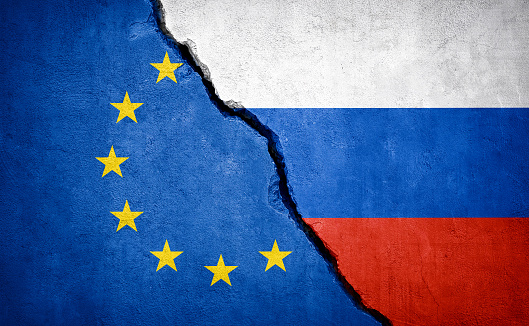What is a Planned Economy?
A planned economy is an economic system where production and investment are guided by large-scale economic plans. The planning is typically centralized but can also be decentralized, participatory, or Soviet in nature. The main goal of a planned economy is to create a stable, regulated system of production.
Central planning
In a planned economy, central planners decide most of the production and distribution of goods and services. These decisions include what products are produced, what services should be available, and how they will be transported. The central planners are responsible for setting the prices of these goods and services. A planned economy is very difficult to run.
In a planned economy, the government creates a central plan that outlines the organization of economic activity. The plan identifies the production objectives, the technologies to be used, and the resources available to meet those objectives. The state also defines the distribution system and restricts the freedom of entrepreneurship.
Attempts at central planning have often failed. This is due to several reasons, including inefficient allocation of resources and labor, the transmission of distorted information from low-level agencies, and the ineffective execution of economic plans. Some countries have Central Planning Bureaux, while others do not. The lack of freedom that accompanies price signals is one of the main reasons for the failure of central planning.
A planned economy is a system in which the government controls the production of goods and services, and then distributes them to consumers. Its main objective is to eliminate inequality and unfair competition in the economy. It is often associated with socialist or communist governments. If an economy is not well-planned, monopolies will arise to exploit consumers and make capitalists money by exploiting labour.
A planned economy can be democratic or authoritarian. Critics of planned economies argue that command economies are necessarily authoritarian. However, indicative planning utilizes incentive-based methods to direct the economy. It is also common in mixed economies, including Western and market-oriented economies. In these countries, macroeconomic planning is the mainstay of economic policy while microeconomics are left up to the market.
Central planning is often associated with former communist countries and governments in East Asia and Latin America. It is still used today in China, Cuba, and parts of Asia, though the majority of planned economies have given way to free market systems. Some other countries employ elements of central planning, especially in times of war, like rationing systems.
Consumer economy
In a planned economy, consumers have limited choices and the decision making process is highly centralized. Most individuals earn a living through their jobs, whether as a plumber, assembly line worker, or teacher. Others make money by selling land, starting business ventures, or earning interest on their savings accounts.
This type of economy relies heavily on the spending habits of consumers, but it also relies heavily on the production of goods and services. Without enough production, the market cannot sustain its consumers’ demands. Governments must create stimulus measures to ensure that people spend more. Increasing tax returns is one way to stimulate consumption. Increasing tax returns also allows businesses to produce more products, creating jobs.
While there are advantages to a planned economy, it isn’t without its drawbacks. Unlike market economies, which are largely free from central planning, a planned economy can be very difficult to sustain. Those who wish to live in a planned economy have a hard time adjusting to the changes in their lives.
In a planned economy, production, consumption, and employment are organized by coordinators. Individuals and firms are grouped together according to the products they produce and the markets they participate in. As a result, the economic life of a single person is entwined with the economic lives of thousands and millions of others.
As the population ages, it is inevitable that a market will evolve in order to meet the needs of retirees. This will alter the demand for goods and services and consequently affect overall market prices and output levels. Often, retirees consume more products and services than the average person. For this reason, some businesses and firms will make products and services that cater to these individuals.
Scarcity economy
In a planned economy, the goods and services produced by a nation are limited by the amount of available resources. Depending on the country, these resources may include workers, government investment, or raw materials such as trees. As the demand for these resources increases, the price for them goes up as well.
When resources become scarce, people have to choose what to produce with them. Using them for one purpose means that they lose an opportunity for another. This is what economists call opportunity cost. This makes economics about choices and the opportunity costs of the actions of individuals and groups. With this in mind, a planned economy forces societies to answer three fundamental questions:
Scarcity is a common economic problem. It is the fundamental problem of economics. The two main causes are demand-induced scarcity and supply-induced scarcity. The first type occurs when there is uneven distribution of resources between the population. The second type is structural. In this case, each sector of the economy has different access to a particular resource.
The two primary factors that determine the price of goods and services are supply and demand. When prices are high, they motivate sellers to produce more of a good. When they do, they will increase their prices. As long as they remain high, this will continue until they reach equilibrium. This is how a market economy works.
In a planned economy, there are a number of problems with the system. One of these is the fact that demand is higher than supply. This creates an economic shortage. This problem is not easily solved in a planned economy because prices are fixed. Moreover, if there is a shortage, the planners will usually blame consumers for the problem.
Socialist utopia is a concept of a social system in which people have equal rights and own property. It originated in the 1840s in France, where socialists created ideologies and sects. In 1839, socialist novelist Etienne Cabet drew a large following among the working class with his novel Voyage en Icarie. Another socialist, Pierre Leroux, advocated a mystical humanitarian socialism in which a new religion of humanity guided social reform. Christian socialist Philippe Buchez helped found the journal L’Atelier, which inspired groups of artisans to form producers’ cooperatives.
Socialist utopia began as a reaction to the French Revolution. Though the revolution had utopian goals, it failed to produce the goods and services it promised. As a result, utopian socialist ideas emerged, including those of Henri de Saint-Simon, Charles Fourier, and Robert Owen.
The idea of utopia has many historical roots. The earliest version of utopian socialism dates back to the writings of Thomas More, and socialist utopias emerged later, after the French Revolution and the ensuing crisis caused by obscene levels of economic and social inequality.
The biggest incentive to adopt socialist policies is the guarantee of a steady income and job security. People will also have more time to enjoy life with a more developed welfare system. Moreover, they will have more power over their lives through elected committees. They will be able to shape the future of society as they see fit.
Despite their contrasting motivations, socialism has become an important meeting ground for radical reformism, anarchism, and sectarianism. While socialists strive to create a democratic society, anarchists tend to see it as a threat to individual rights.
In order to create a socialist society, the working class would be the one to decide what the future will hold. In such an economy, the working class would be able to control the surplus in society and invest it in public services, new ecological industries, and mass infrastructure projects. They would also be able to make decisions based on the will of the people.
Marx believed in two stages of socialist society. In the first stage, capitalism would survive in some form, but in a modified form. People would still be paid according to their hours of work. The working week would be shortened by the workers’ government to promote economic decision-making and achieve a better balance.



